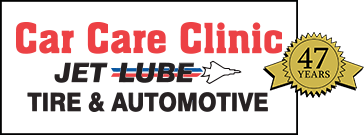Care and Maintenance Tips Keep Your Car Running in Top-Notch Condition
We’ve compiled our best expert advice, surprising tricks, and car care tips to prolong the life of your automobile!
Be patient during the break-in period
You’ve bought your dream car and now you want to make it last at long as possible in top condition. Here are some things to remember as you pull it out of the dealer’s lot:
- During the break-in period, typically the first 1,000 miles (1,600 km), keep your speed under 55 mph (88 kpm) or to the speed recommended by your car’s manufacturer.
- Avoid heavy loads on the drive train, such as towing trailers, and loading the roof rack or trunk with heavy construction materials.
- Do not allow your new car to idle for long periods — this is good advice for the life of your car, but especially during breakin. The oil pressure generated by doing so may not be sending oil to every part of your engine.
- Use only light to medium acceleration, keeping the engine rpms below 3,000 for the first few hours of driving.
Drive with care everyday
Being car considerate shouldn’t stop after the break-in. Drive with care every day and your car will reward you with longer intervals without repair.
- Do not race your car’s engine during start-up.This is a quick way to add years of wear to your engine, especially if it’s cold outside.
- Accelerate slowly when you begin your drive.The most wear to the engine and drive train occurs in the first ten to twenty minutes of operation.
- Warming the engine by letting it idle in the driveway is not a smart idea.The engine doesn’t operate at its peak temperature, resulting in incomplete fuel combustion, soot deposits on cylinder walls, oil contamination, and ultimately damaged components.
- Put less strain on your engine and automatic transmission by shifting to neutral at red lights. Otherwise, the engine is still working to push the car even while it’s stopped.
- Avoid driving at high speeds and accelerating quickly, especially when it’s very hot or very cold outside. Such driving behavior will result in more frequent repairs.
- Extend the life of your tires with careful driving. Observe posted speed limits. Avoid fast starts, stops, and turns. Avoid potholes and objects on the road. Don’t run over curbs or hit the tire against the curb when parking. And, of course, don’t burn rubber.
- When turning your steering wheel, don’t hold it in an extreme right or left position for more than a few seconds. Doing so can damage the power-steering pump.
- Consolidate your short driving trips. Most of the wear and tear — as well as the pollution your car generates — takes place in the first few minutes of driving. Doing several errands at once, during low traffic hours if possible, will keep your engine happier longer.
Buy gas at reputable service stations
Ask whether the gas you buy is filtered at the pump and if the station has a policy about changing the pump filters regularly. If you get a song and dance, find another gas station. Some stations don’t have pump filters, making you more vulnerable to dirty gasoline. Other stations may not mix alcohol and fuel properly — or worse, water down their product. Find a station you trust and stick to it.
Don’t fill up if you see the tanker
If you happen to see a gasoline tanker filling the tanks at your local gas station, come back another day or go to a different station. As the station’s underground tanks are being filled, the turbulence can stir up sediment. Sediment in your gas can clog fuel filters and fuel injectors, causing poor performance and possibly necessitating repairs.
Go easy when you’re stuck
When stuck in mud or snow, don’t make the problem worse by damaging an expensive component. Gently rocking in an attempt to free the car is fine. But if it looks as though you’re really stuck, don’t keep at it. Throwing your car from forward to reverse repeatedly, as well as spinning tires at high speeds, can generate lots of heat and spell trouble for transmissions, clutches, and differentials. It may be cheaper in the long run to call the tow truck rather than risk big repair bills down the road. It’s a good idea to carry a traction aid in the trunk, such as sand, gravel, or cat litter.
Lighten up your key chain
Does your car key share a chain with a dozen or more other keys? That’s a pretty heavy load hanging off the car key when it’s in the ignition.The weight, combined with bouncing while you drive, can wear out the tumblers inside the ignition and eventually lead to ignition switch failure.To add years of service to your ignition switch, purchase a lightweight key chain that allows you to separate your ignition key from the others. Drive with only the ignition key in your ignition. If your ignition key “sticks” when you try to turn on the car, it’s a warning that your ignition switch is about to fail. Replace it before you get stranded.
Choose a good car insurer
Sometimes, no matter how careful you are, disaster inevitably strikes — typically in the form of an accident. Make sure that your car will be repaired to the best possible standard by finding an insurer that will pay for parts from the original manufacturer and guarantee the repairs it authorizes.
Keep an auto log
Keep a pad and pencil in the glove compartment and use them to record your gas fill-ups and mileage. If you notice that your gas mileage worsens, mention it to your service man. It may be an early warning sign that something is wrong with your car.
Preserve your car during long-term storage
If you are not going to use your car for more than a month, store it properly to prevent unnecessary damage and repairs upon your return.
- Fill the gas tank to help prevent condensation from accumulating in the gas tank. Add a fuel stabilizer and drive the car around a bit to distribute the additive to engine parts.
- Wash and wax the car thoroughly to protect the finish.
- Place a vapor barrier on your garage floor. A 4-mil polyethylene drop cloth will do.
- Disengage the parking brake to help avoid brake corrosion.
- Put the car on jack stands to take the weight of the vehicle off the wheels and tires.
- Disconnect and remove the battery to keep it from draining. Place the battery on a trickletype charger. Or periodically drain the battery, using a small light bulb, and then recharge it with a low-volt charger.
- Plug the tailpipe with a rag to prevent moist air from infiltrating into it.


